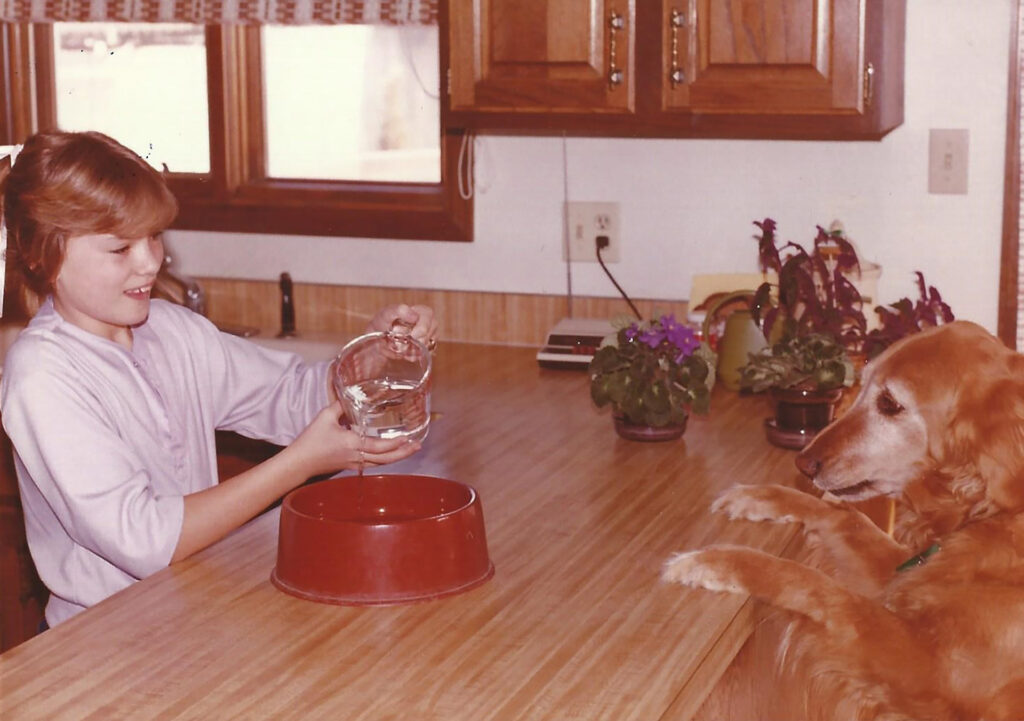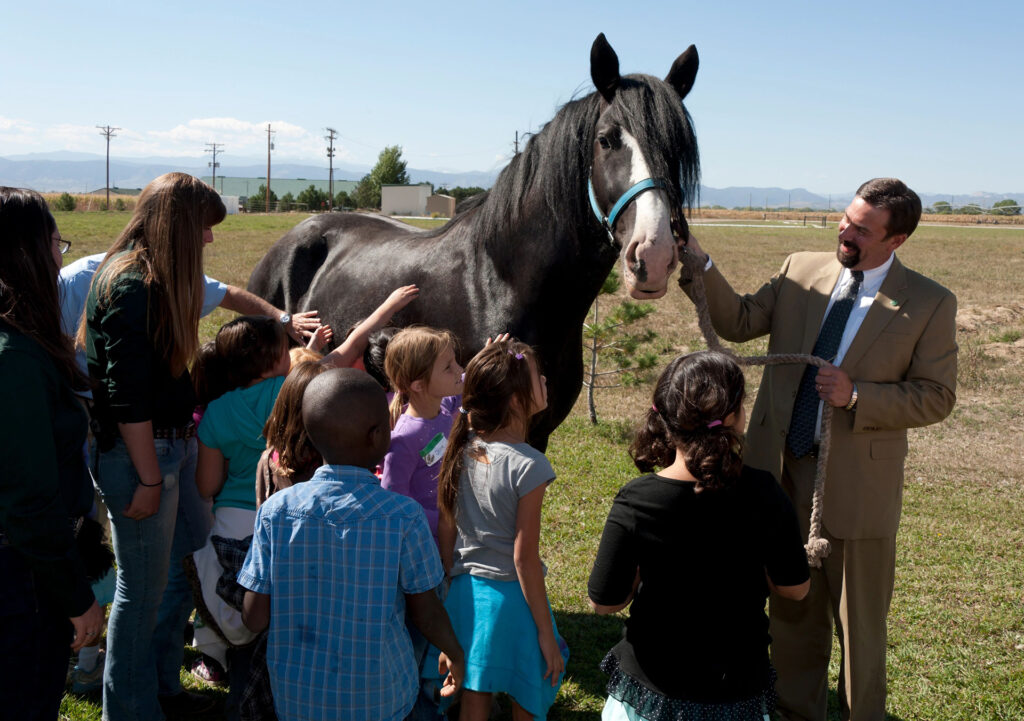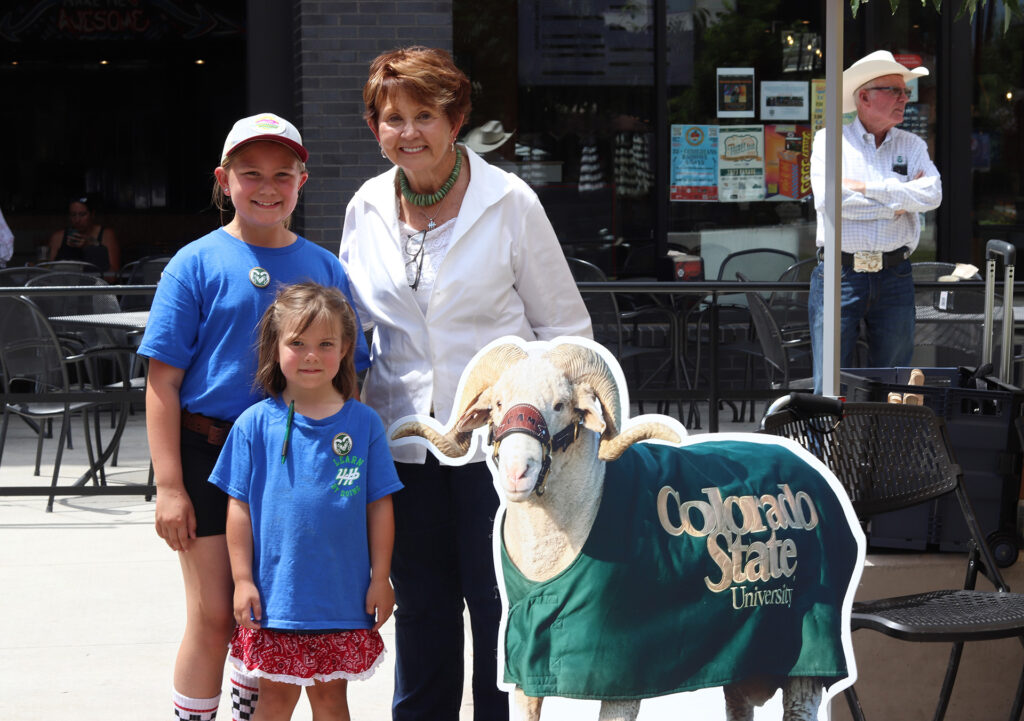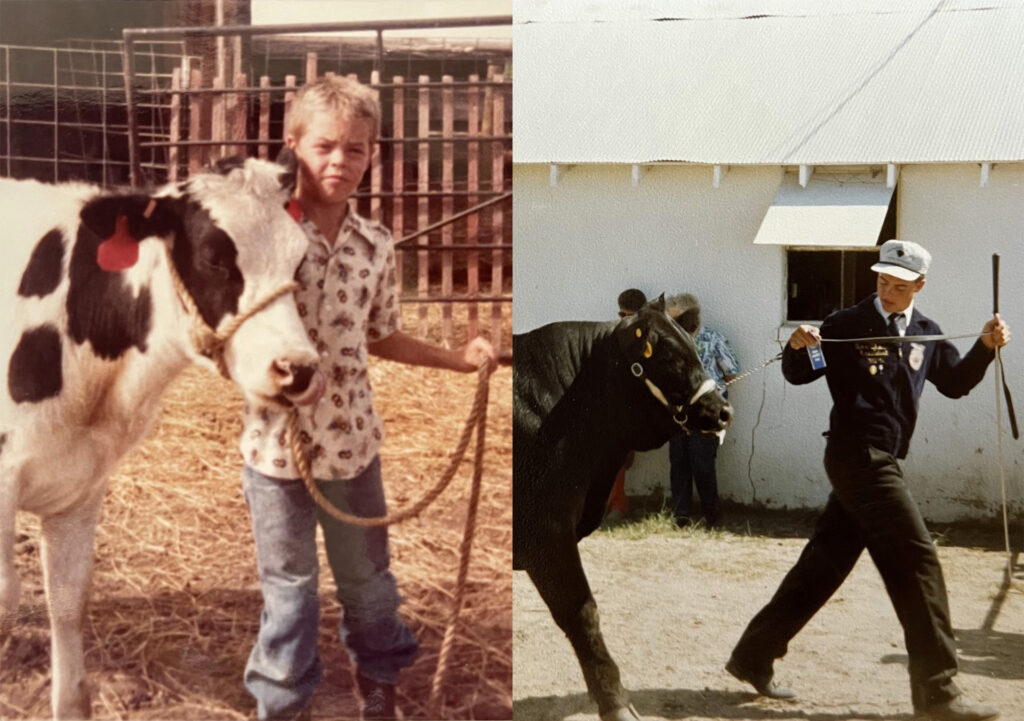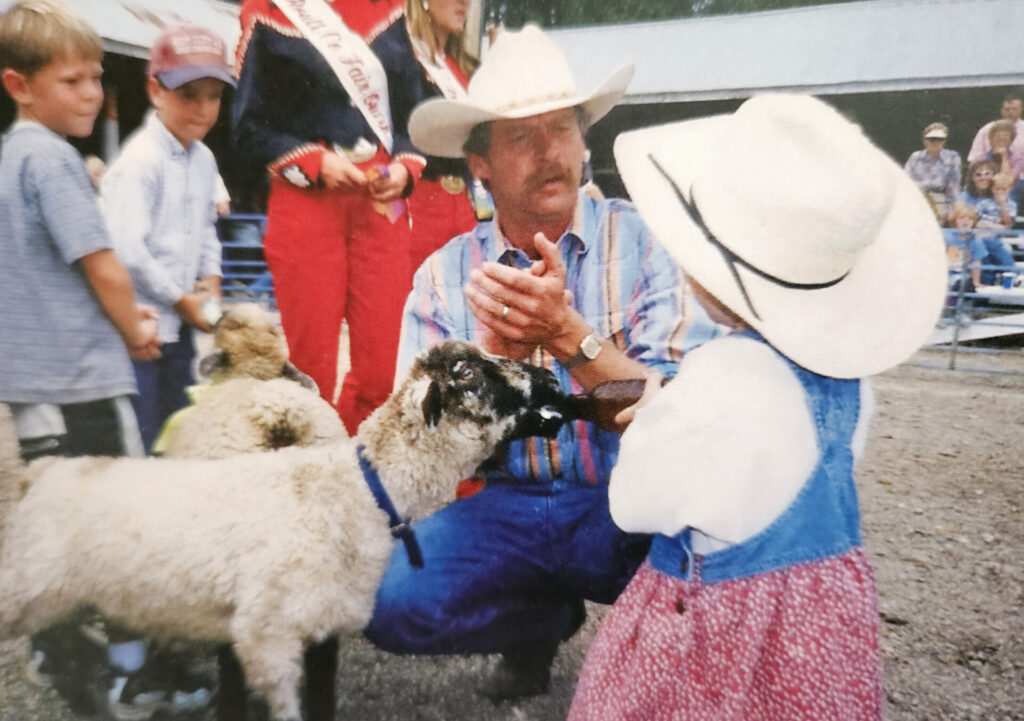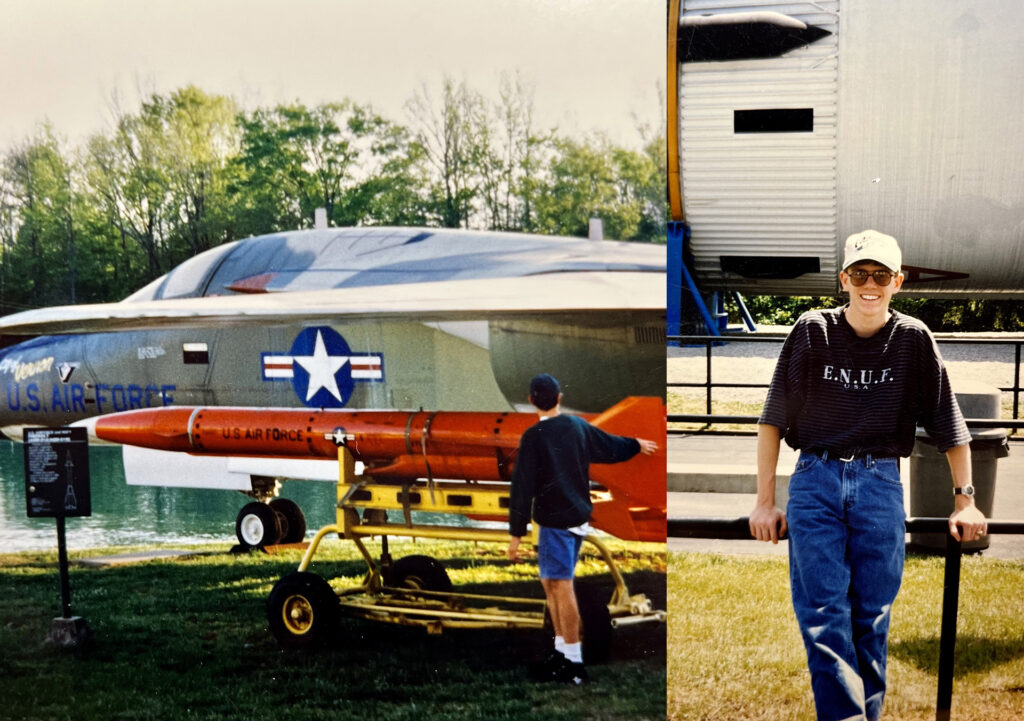Youth development programs like 4-H and FFA teach young people leadership and life skills – and their lessons last a lifetime.
Colorado 4-H, delivered by Colorado State University Extension, reaches more than 106,000 youth in Colorado annually. Participants complete hands-on projects in areas such as health, science, agriculture and citizenship.
The College of Agricultural Sciences has long worked with FFA to prepare students to become agricultural education instructors and FFA advisors. The college hosts annual FFA career development events on campus and provides leadership training and scholarships to FFA state officers. The Colorado FFA Foundation also partnered with CSU to create the CoBank Center for Agricultural Education, a classroom and event center that houses the Colorado Agriculture Hall of Fame, at CSU’s Agricultural Research, Development and Education Center (ARDEC).
Some CSU leaders, including President Amy Parsons and CSU System Chancellor Tony Frank, were members of 4-H and FFA. In anticipation of the Colorado State Fair starting Friday and running through Sept. 4 in Pueblo, SOURCE asked several University leaders about participating in these programs and how the experience impacted them.
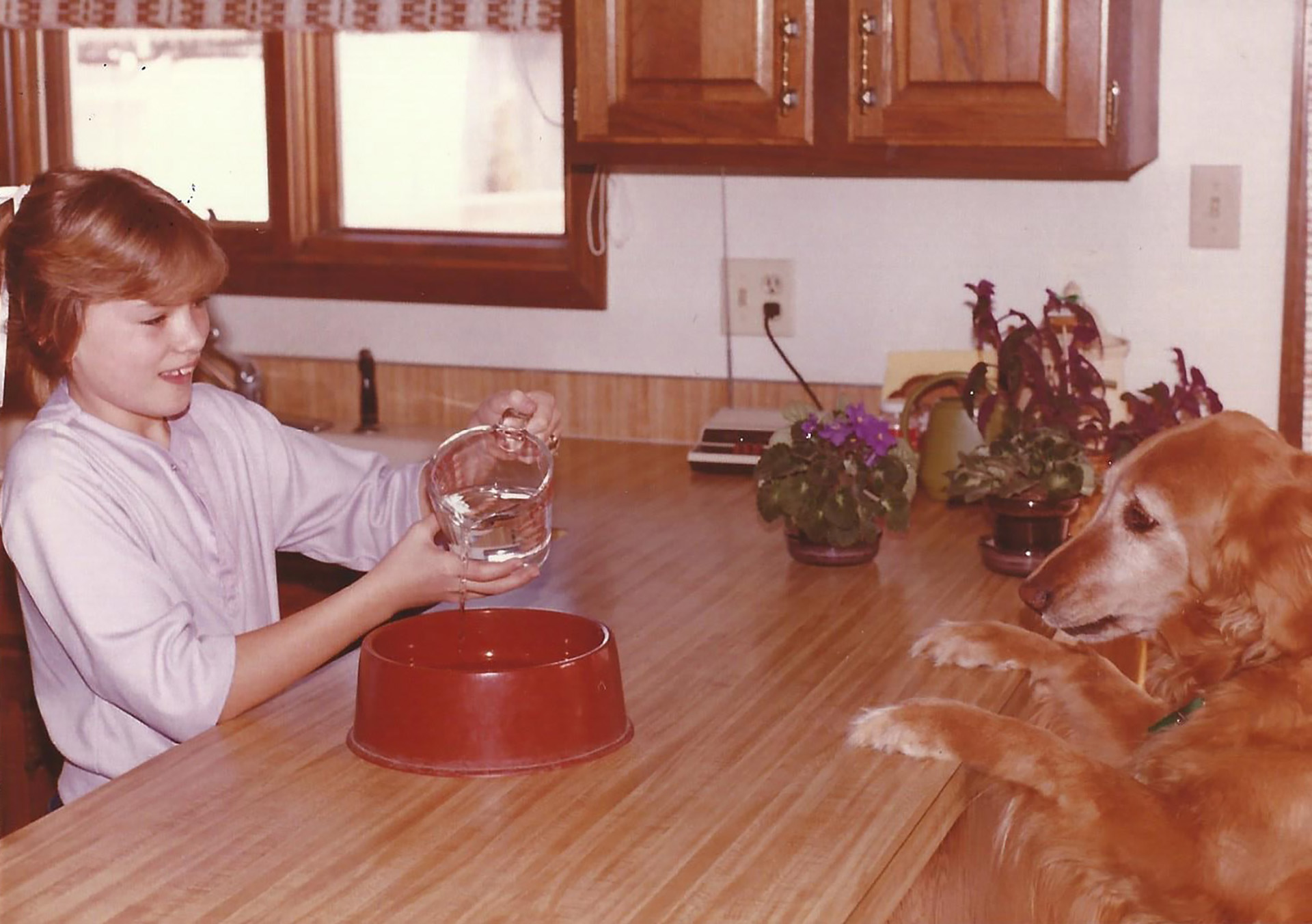
CSU President Amy Parsons grew up participating in 4-H. In addition to baking and sewing, pet keeping was one of her favorite areas. For the project pictured, she investigated the impact of temperature on how much water dogs should drink in a day.
“4-H was an important part of my life growing up. I attribute my experiences in 4-H to a lot of my personal growth in the early years of my life, which has served me well ever since.”
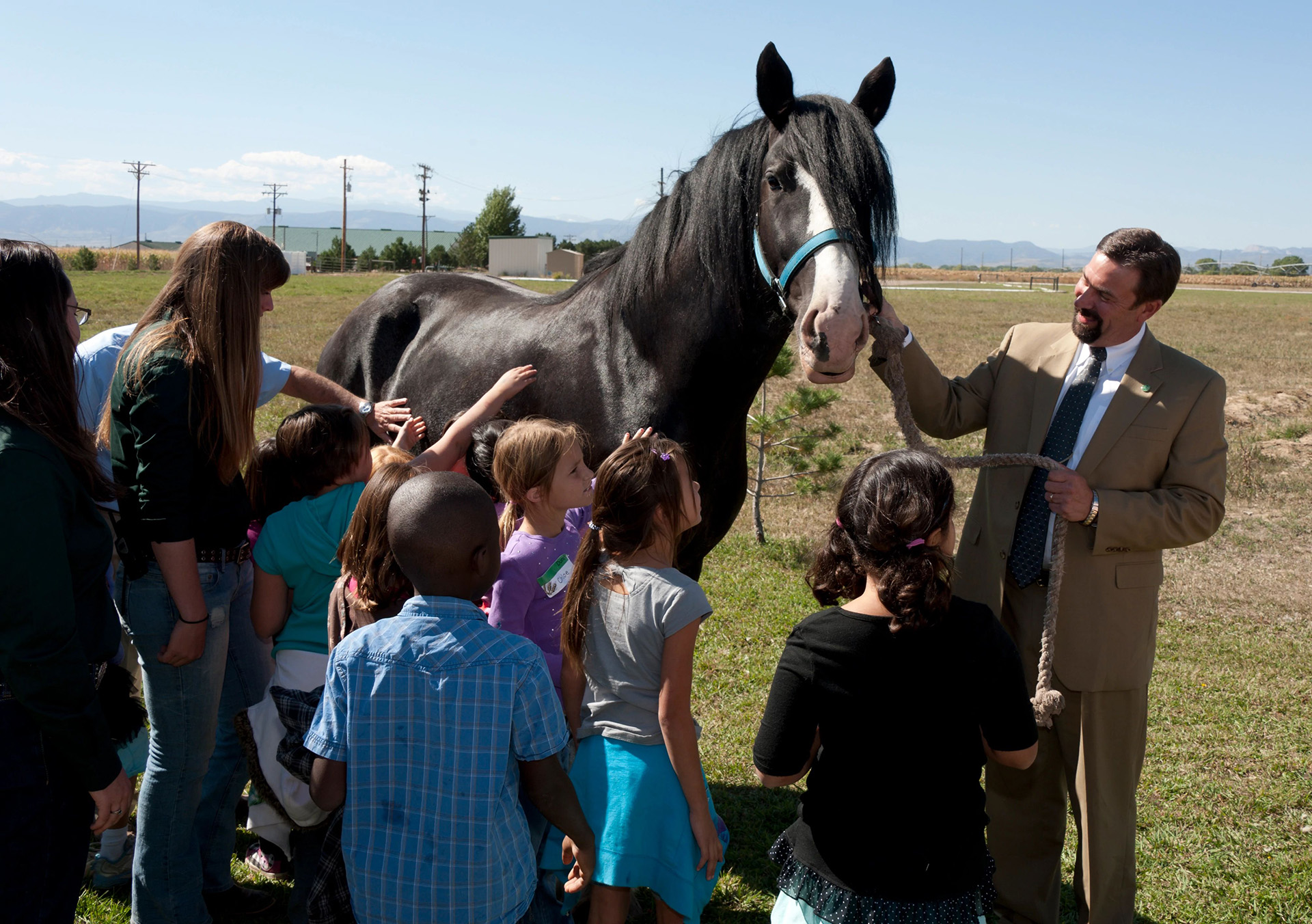
CSU System Chancellor Tony Frank was a 4-H member in Lee County, Illinois, where he was very active in livestock projects – although he also once had an art project, a wax carving, go to state fair. Growing up on a farm in central Illinois, Frank’s father was a 4-H club leader, and his two older brothers were active in 4-H. So he couldn’t wait to join the Compton-Brooklyn Beavers 4-H club and have the chance to show livestock and play softball. It was only later, after he had held every office in the club, that he realized how much more the 4-H experience had taught him.
“As secretary, I learned that the lowest-ranked office usually has the hardest job. As treasurer, I learned it’s a special responsibility to handle other people’s money. As vice president, I learned teamwork. As president, I learned that one person can do a little, but a team can do a lot.”
Frank has been inducted into the 4-H Halls of Fame in Colorado and Illinois.
Pictured here: Then president of CSU, Frank joins third graders in admiring Audrey-Lyn Stockton’s shire stallion, Black Magic, Sept. 29, 2011, during Ag Adventure at CSU’s Agricultural Research, Development and Education Center (ARDEC).
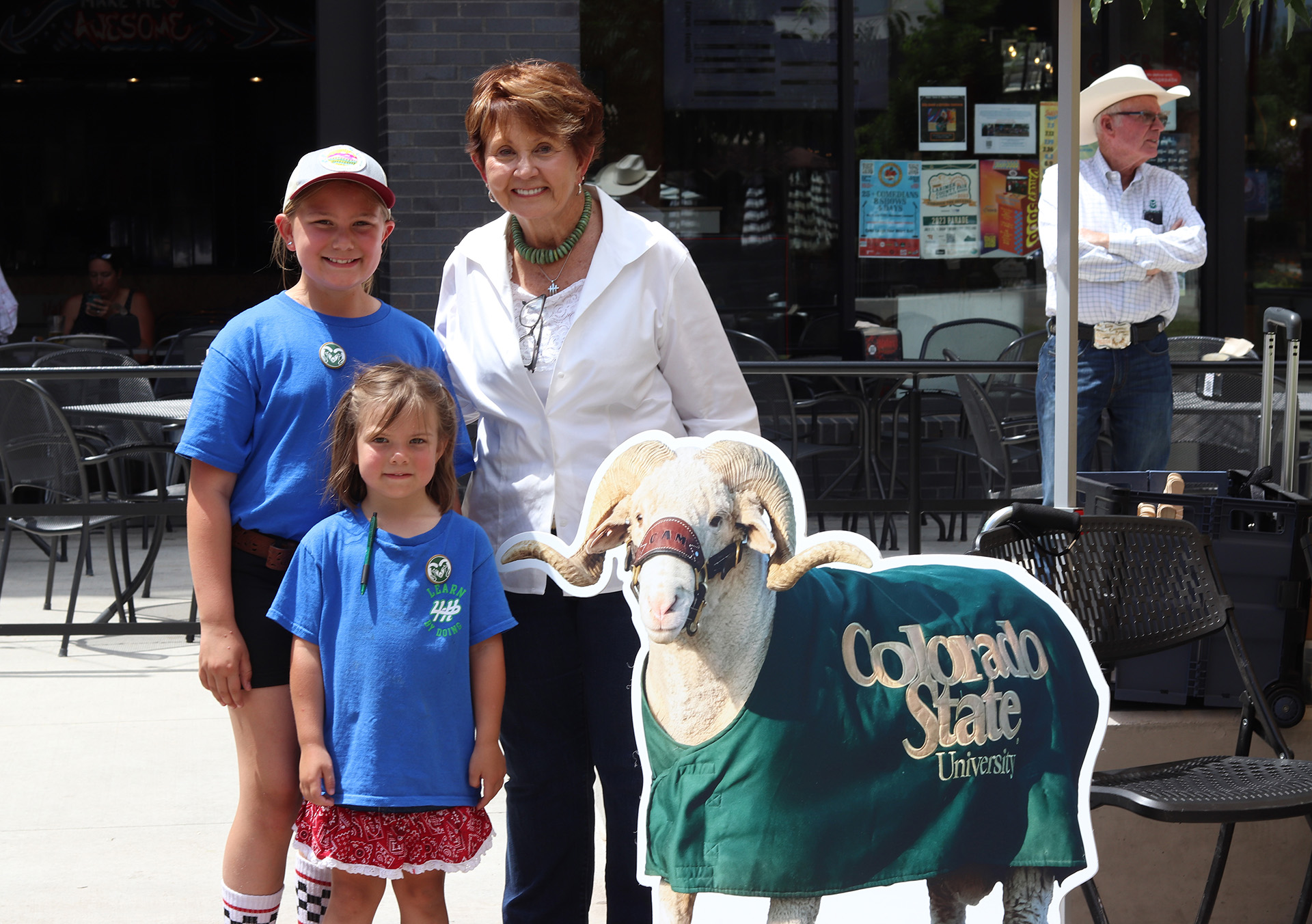
Interim Vice President for Engagement and Extension Kathay Rennels was a Colorado 4-H participant, showing beef and horses. She also was a 4-H leader for the Livermore Wranglers and a superintendent at the fair in baking and produce for a few years. She worked with 4-H and FFA members for eight years in her position on the State Fair Board. Here, Rennels poses for a photo with two 4-H members in August during the Larimer County Fair.
“The work and dedication they put into their projects and animals is extraordinary. 4-H and FFA build such great life skills and respect for the land and community. Those kids benefit from every moment they spend in their clubs and on community projects, and those skills go with them the rest of their lives.”
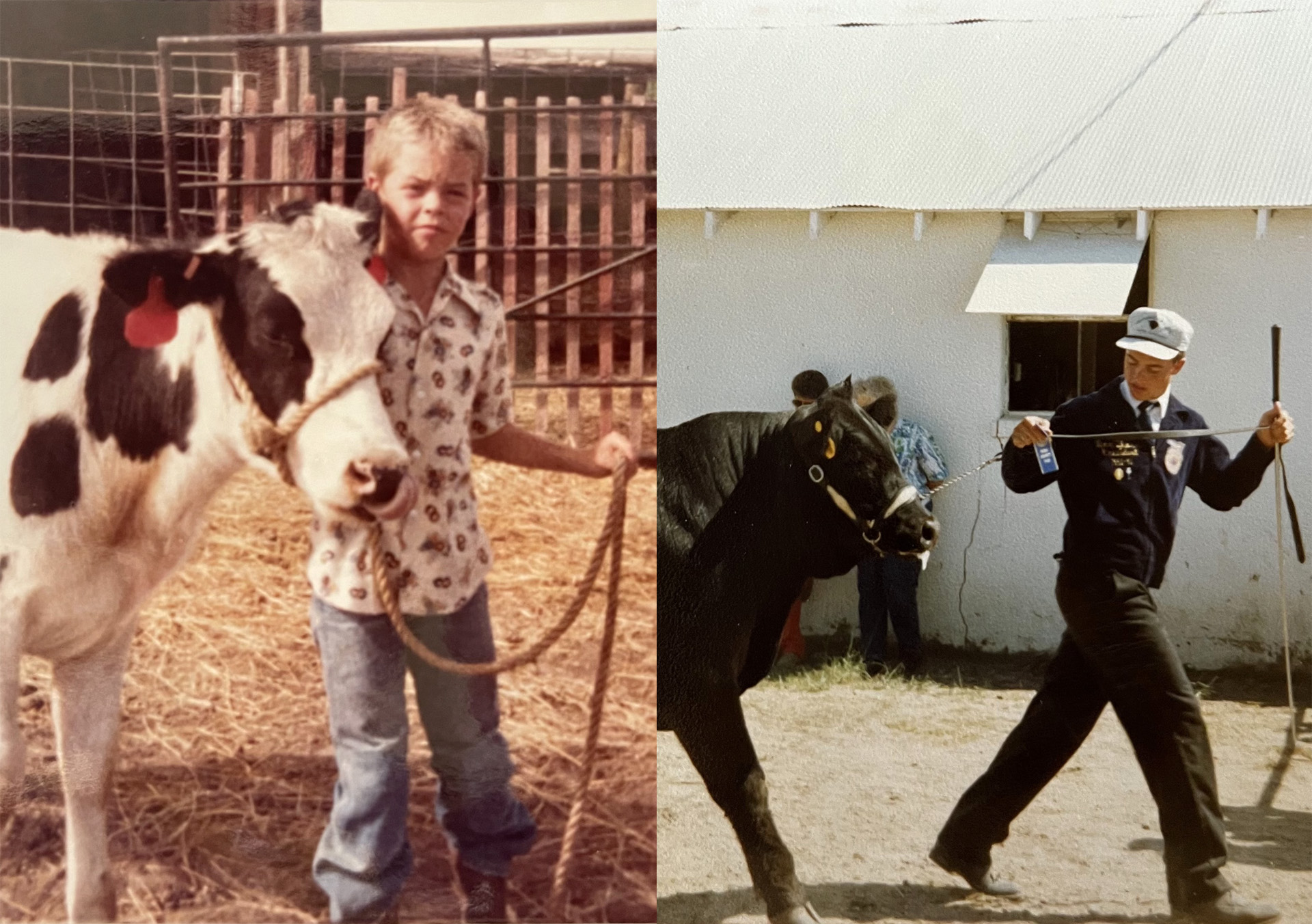
Don Thorn, manager of external relations for rural Colorado in the College of Agricultural Sciences and Office of Engagement and Extension, started in 4-H at age 9. After obtaining a loan from a local foundation and opening a checking account at the local bank, he purchased his first dairy heifer, named Amy, from Harper Dairy in Yuma. He showed dairy heifers (Amy, Betsy, Clara, Daisy and Betsy’s calf, Babe) through 4-H at the Yuma County Fair until his senior year. When he entered high school, he joined FFA and started showing beef cattle and dairy at the Yuma County Fair. Pictured here, at left, Thorn and Amy get to know each other and practice for the show. At right, Thorn shows beef in FFA.
“Raising, caring for and exhibiting livestock at the county fair played such a large part of my youth development. Many skills and experiences, especially financial literacy and independence, responsibility of chores, friendly competition and networking (we just called them ‘fair-time friends’ from other communities) that I learned are integral to who I am and the occupational path I have traveled.”
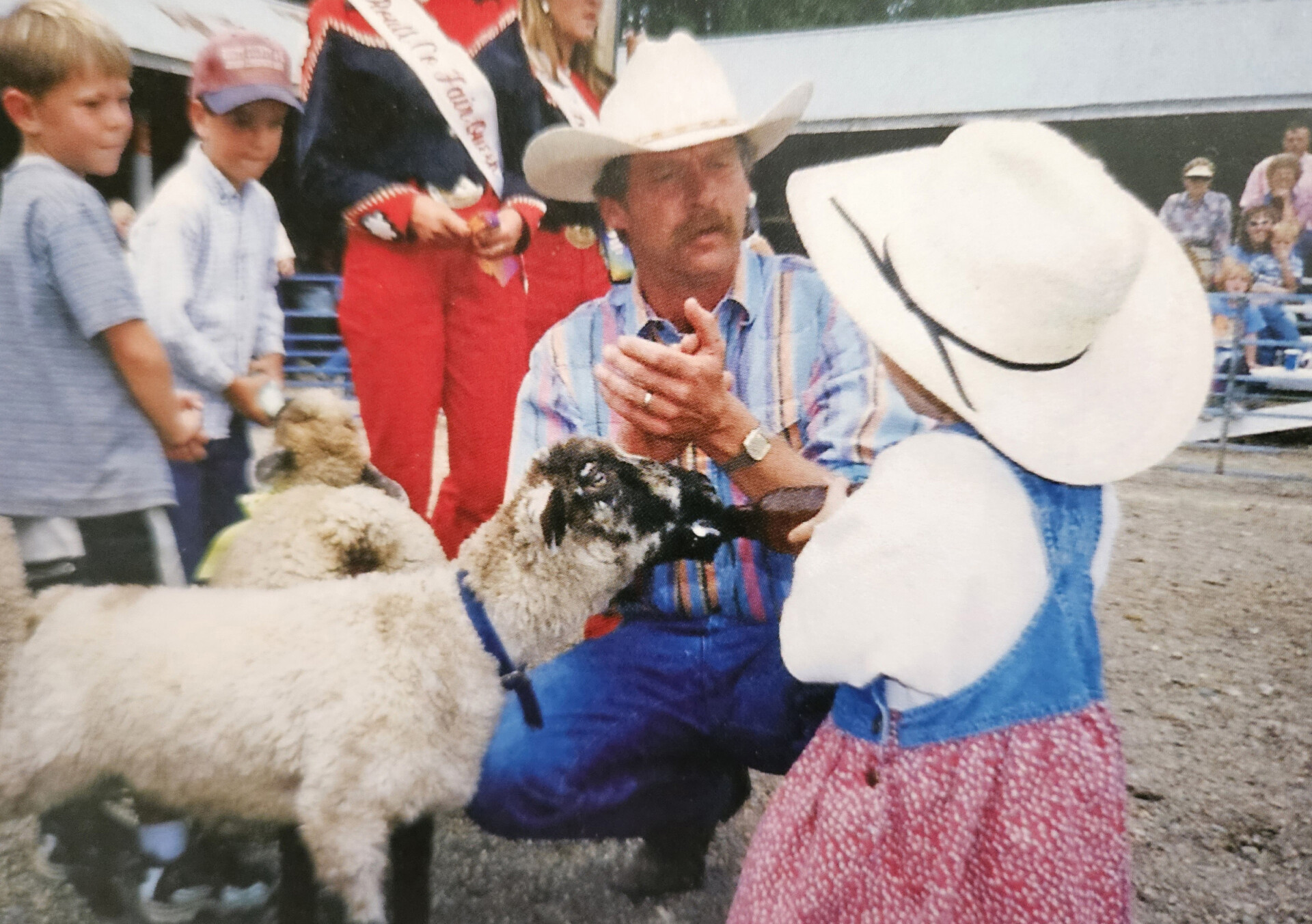
CJ Mucklow, interim director of operations for Extension, wasn’t in 4-H growing up, but he has spent a lot of time working with 4-H youth, including at the state fair. In this photo from 25 years ago, he advises a young 4-H member who is exhibiting a lamb.
“Fairs and 4-H livestock competitions only produce one grand champion animal in each species or class, but 4-H is about producing grand champion youth no matter where your animal places.”
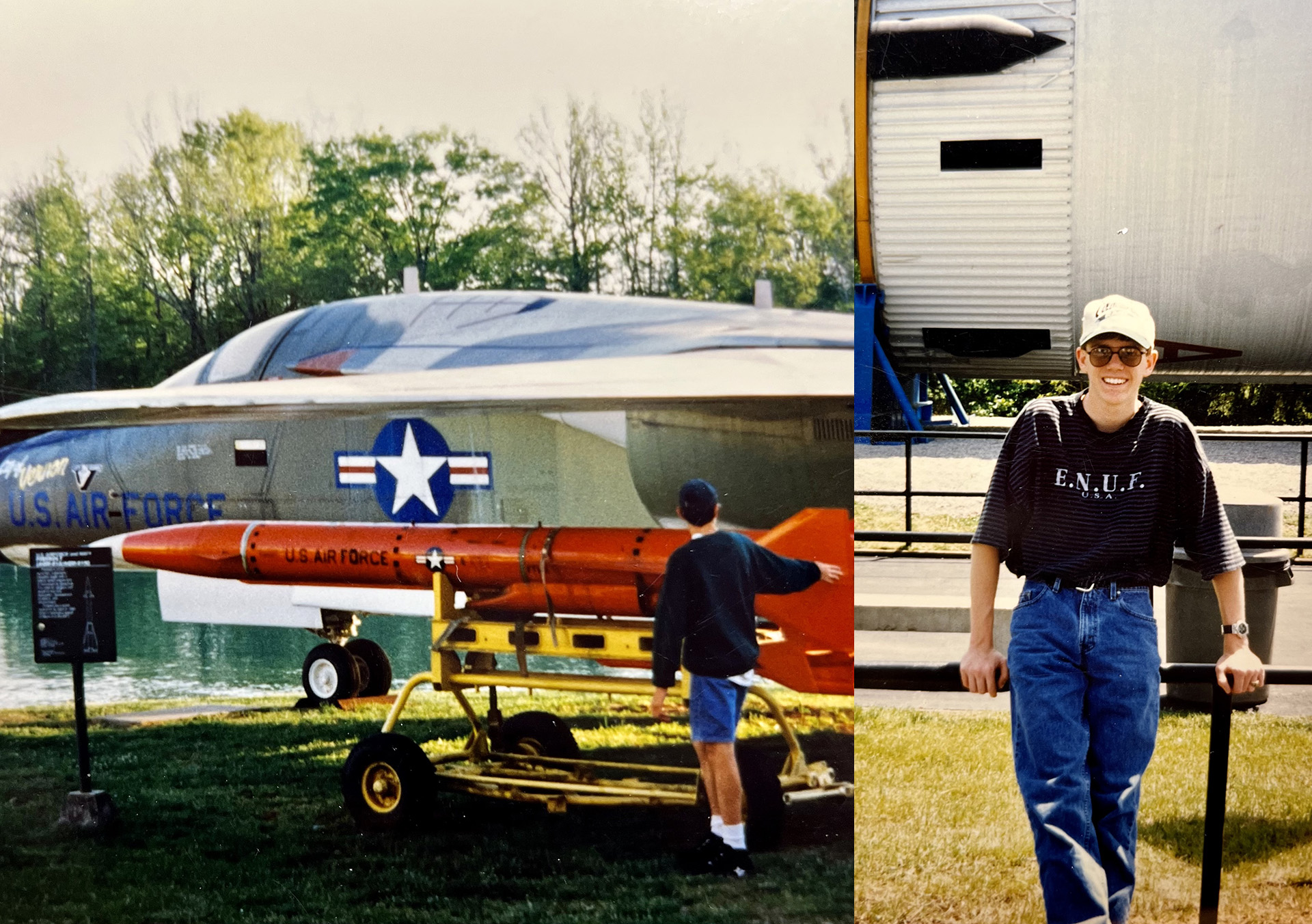
Matt Camper, College of Agricultural Sciences assistant dean for teaching practice and academic programs, went to Space Camp through his local 4-H chapter’s aeronautics program. He was part of the Custer County 4-H chapter in Westcliffe, Colorado.
“I was in the 4-H aviation program – designed to allow participants to learn how to build and fly model aircraft – from 1988-1995. The club raised money to go to Space Camp in Huntsville, Alabama to learn more about space flight through an immersive one-week, live-in experience. Club members later learned about helicopters, culminating in three days of instruction/experiential learning at the Fort Carson Army Base in Colorado Springs, where all participants got three hours of instruction in the U.S. Army’s Blackhawk helicopter flight simulator. One of the club advisors was also an active fixed-wing aircraft pilot and instructor. Many participants (myself included) were able to log all VFR flight hours toward our pilot’s license.”
